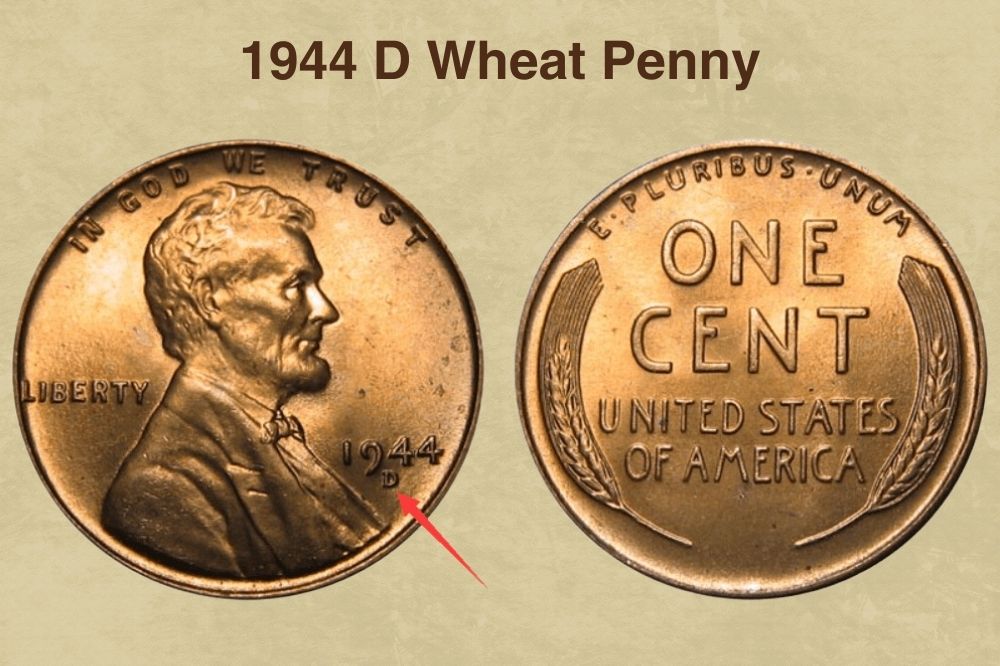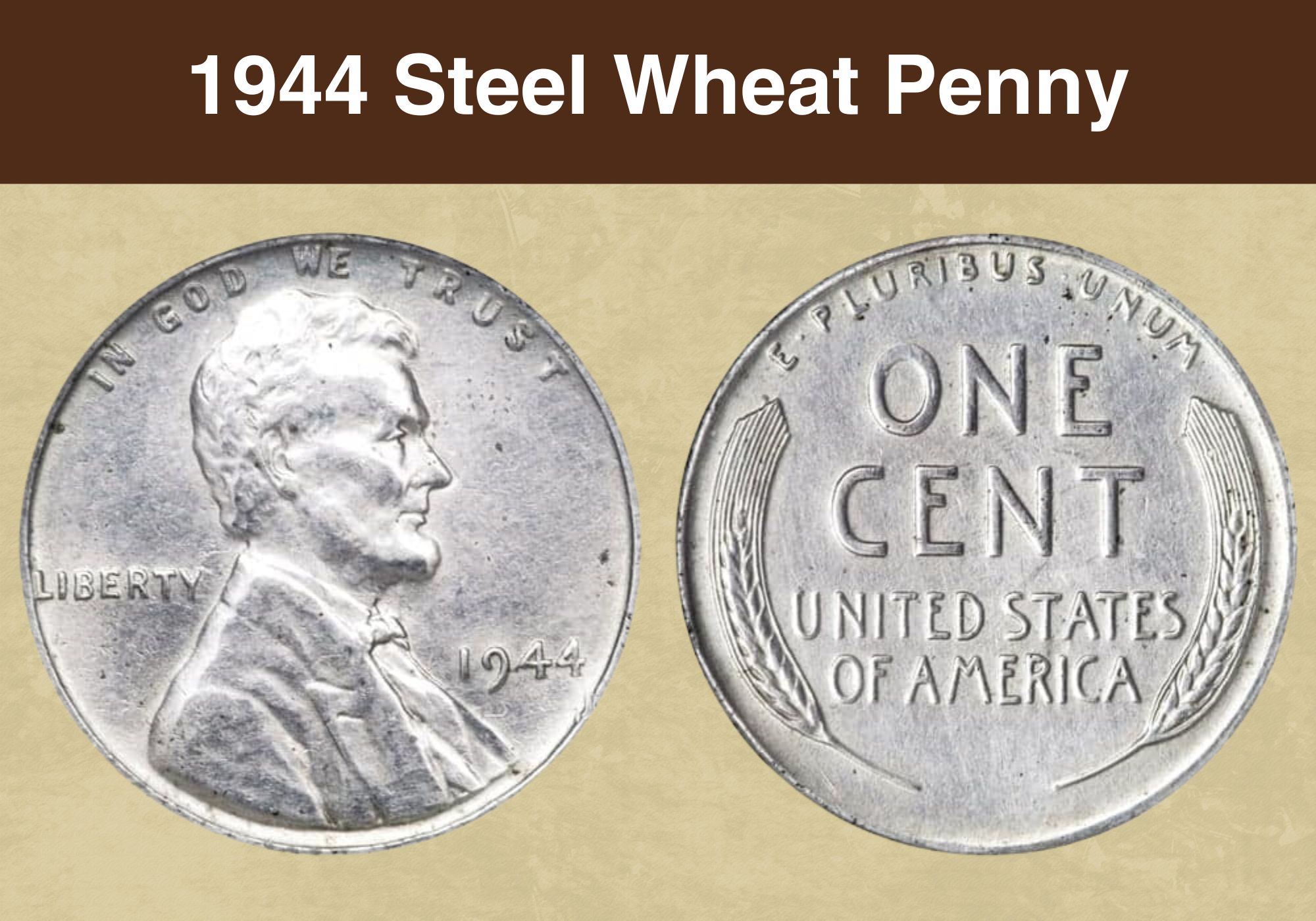1944 penny value The 1944 penny holds a special place in the hearts of coin collectors and history enthusiasts alike. Whether you’re a seasoned numismatist or someone who has come across this little copper coin in their pocket change, understanding the value of a 1944 penny is more complex than you might think. Let’s dive deep into the world of 1944 pennies, exploring their historical significance, variations, and why they are still so sought after today.
- The Historical Significance of the 1944 Penny
A World at War: How WWII Shaped the 1944 Penny
In 1944, the world was deep 1944 penny value in the throes of World War II, and that had a huge impact on many industries — coin production included. Due to wartime needs, certain metals were in short supply. The U.S. Mint had to adapt to the restrictions and demands of the time, which played a role in the production of the 1944 penny.
During WWII, copper was in high demand for munitions, which led the U.S. Mint to experiment with other materials for their coins in previous years, like steel in 1943. But by 1944, copper had returned, and the pennies minted that year were produced primarily from recycled shell casings. This not only added a layer of historical significance to the 1944 penny value coin but also meant the pennies of that era had a distinct composition compared to other years.
The Use of Recycled Metals: A Unique Composition

The pennies produced in 1944 were made from 95% copper and 5% zinc, and a large portion of that copper came from recycled military shell casings. This is one of the reasons collectors find the 1944 penny particularly interesting; it’s not just a coin, but a piece of wartime history. The idea that these pennies were part of the war effort 1944 penny value makes them much more than a small piece of metal — they represent a time when every resource counted.
The recycled shell casings used for the pennies gave them a slightly different color compared to pennies minted in previous years. Some 1944 pennies might appear darker or have a more unique patina, which adds to their collectible value. If 1944 penny value you ever come across one, you may notice it has a slightly different hue than more modern pennies, and that’s part of its charm.
Public Perception and Patriotism: Why the 1944 Penny Resonated
Back in 1944, the war effort was a central part of everyday American life. People were rationing food, collecting scrap metal, and doing whatever they could to support the troops. The production of pennies from recycled materials like shell casings added to the sense of collective effort. The 1944 penny wasn’t just currency; it was a symbol of 1944 penny value resilience and patriotism during a time of great struggle.
Many people didn’t just spend their 1944 pennies without a second thought. Some held onto them, either out of a sense of patriotism or simply as a keepsake from a time when everyone was doing their part for the war effort. This historical context is part of why the 1944 penny remains such a beloved item for collectors today.
- Different Types of 1944 Pennies and Their Variations
The Standard 1944 Lincoln Wheat Penny
The most common version of 1944 penny value the 1944 penny is the Lincoln Wheat Penny. This version of the penny features Abraham Lincoln on the front, which was first introduced in 1909 to mark Lincoln’s 100th birthday. The reverse of the coin features two wheat stalks, hence the name “Wheat Penny,” surrounding the denomination and the words “ONE CENT” along with “E PLURIBUS UNUM.”
What makes this penny stand out from others is the metal composition — again, largely copper due to the recycled shell casings. However, beyond the metal, the design itself is classic and beloved by many collectors. There’s a simple elegance to the Wheat Penny that many people appreciate.
Collectors typically seek out 1944 penny value pennies in good condition, and the standard 1944 Lincoln Wheat Penny is no exception. Coins that haven’t been damaged, corroded, or excessively worn will fetch higher prices. But even if you have a 1944 penny that’s seen better days, it still has some historical value.
The 1944 Steel Penny: A Rare Error Coin
One of the 1944 penny value most famous variations of the 1944 penny is the 1944 steel penny. Wait, steel? Yes, you read that right. While pennies in 1944 were supposed to be made of copper, a small number were accidentally struck on leftover steel planchets from 1943. The 1943 steel pennies were made due to copper shortages, but some steel blanks were mistakenly used again in 1944, creating one of the most sought-after error coins.
The 1944 steel penny is extremely rare, and its value can skyrocket depending on its condition. These coins are so prized because they are an anomaly. The fact that these steel pennies weren’t supposed to be made makes them incredibly valuable to collectors. If you happen to have one of these in your possession, you’re sitting 1944 penny value on a potential goldmine.
Finding a 1944 steel penny isn’t just a lucky break; it’s a major find in the world of coin collecting. Even in lower grades, these coins can be worth thousands of dollars. If you ever suspect you have one, it’s worth getting it professionally appraised to confirm its authenticity and value.
1944-D and 1944-S Pennies: Mint Mark Variations
Another fascinating aspect of 1944 penny value the 1944 penny is the different mint marks that can appear on the coin. The mint mark on a penny indicates where the coin was produced. For the 1944 penny, there are three possible mint marks:
- No mint mark: This indicates that the penny was minted in Philadelphia, the primary location of the U.S. Mint.
- D mint mark: Indicates the penny was minted in Denver.
- S mint mark: Indicates the penny was minted in San Francisco.
While the difference between 1944 penny value these pennies may seem minor, mint marks can significantly impact a coin’s value. For example, 1944 pennies minted in San Francisco (marked with an “S”) tend to be slightly more valuable than those from other mints due to lower production numbers. Additionally, pennies from the Denver Mint (“D”) often command higher prices than those with no mint mark.
Collectors typically seek out coins from all three mints to complete a set. Having all three versions — Philadelphia, Denver, and San Francisco — makes for a more comprehensive collection, and this pursuit drives up the value of certain mint-marked coins.
- Factors That Affect the Value of a 1944 Penny
Condition and Grading: How Quality Impacts Price
The condition of a coin is 1944 penny value one of the most critical factors in determining its value, and this holds especially true for the 1944 penny. Coins are graded on a scale from Poor (P-1) to Mint State (MS-70), and the better the condition of the coin, the higher its value.
For a 1944 penny, a well-worn example might only be worth a few cents, while a pristine coin in mint condition could be worth significantly more. Coins in higher grades tend to have sharper details, fewer scratches, and better overall 1944 penny value eye appeal. The difference in price between a coin graded as Fine (F-12) and one graded as Extremely Fine (EF-40) can be substantial, so the condition plays a big role in how much your 1944 penny is worth.
One thing to watch out for when it comes to grading is cleaning. Many well-meaning individuals attempt to clean their coins to improve their appearance, but this can lower their value. Collectors and professional graders can tell when a coin has been cleaned, and they typically prefer coins that show natural wear and patina. So, 1944 penny value if you have an old 1944 penny, it’s best to leave it as-is.
Rarity and Demand: Why Some Pennies Are Worth More Than Others
Rarity is another key factor in the value of a 1944 penny. As mentioned earlier, the 1944 steel penny is incredibly rare, which is why it commands such a high price. But beyond rarity, demand is also essential. Even if a coin is rare, if there’s not much interest from collectors, its value won’t be as high. Fortunately for 1944 pennies, the demand is strong.
This is partly due to the historical significance of the year 1944 and partly due to the love for Wheat Pennies in general. 1944 penny value Collectors have long been fascinated by the design of Wheat Pennies, and the fact that the 1944 penny was made from recycled shell casings adds to the intrigue. This combination of factors — rarity, demand, and historical significance — makes the 1944 penny a favorite among collectors.
Additionally, certain variations of the 1944 penny, such as those with specific mint marks or error coins like the steel penny, are highly coveted. The demand for these coins often exceeds the supply, which drives up their prices even further. The 1944 penny might not be the rarest coin out there, but its unique story and enduring appeal keep it valuable.
Errors and Die Varieties: Unique Coins with Unique Value
One of the most exciting aspects of coin collecting is finding error coins or coins with die varieties. These are coins that were accidentally mi1944 penny value nted with some kind of defect or variation, and they can be worth significantly more than standard coins. In the case of the 1944 penny, there are several known errors and varieties that collectors look for.
For example, the 1944 D/S penny is a known variety where the “D” mint mark for Denver was stamped over an “S” mint mark from San.
